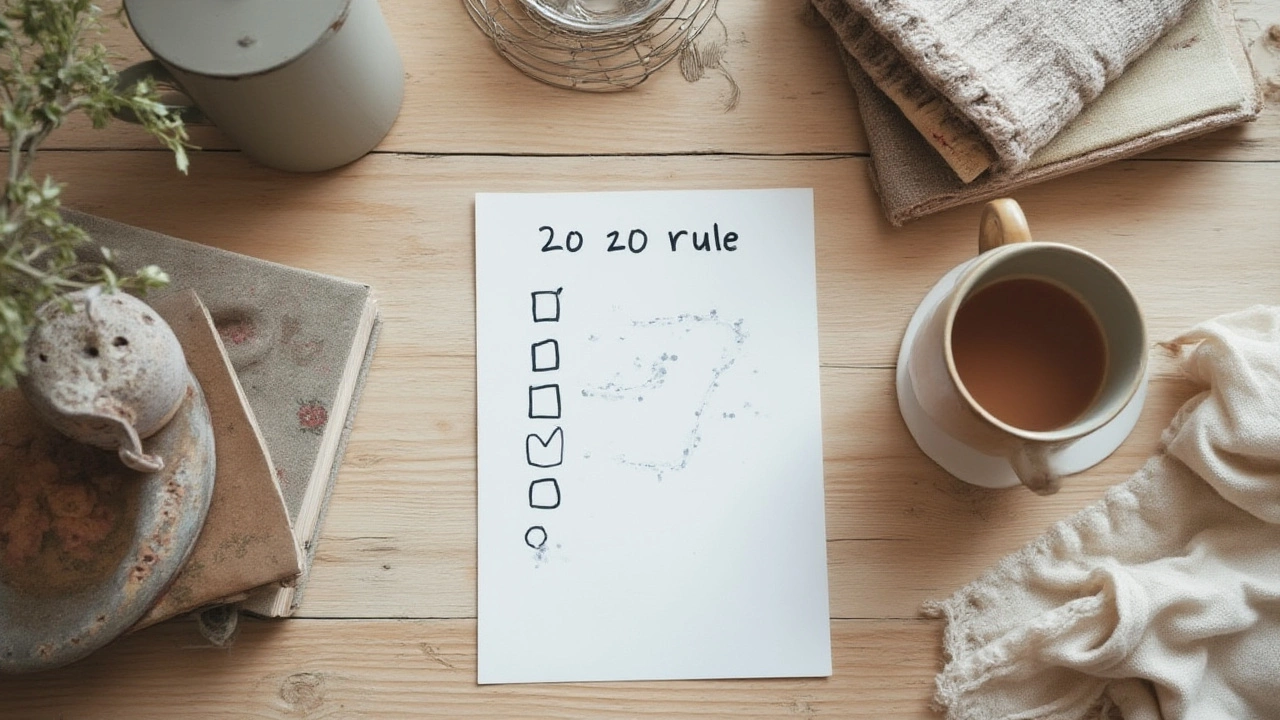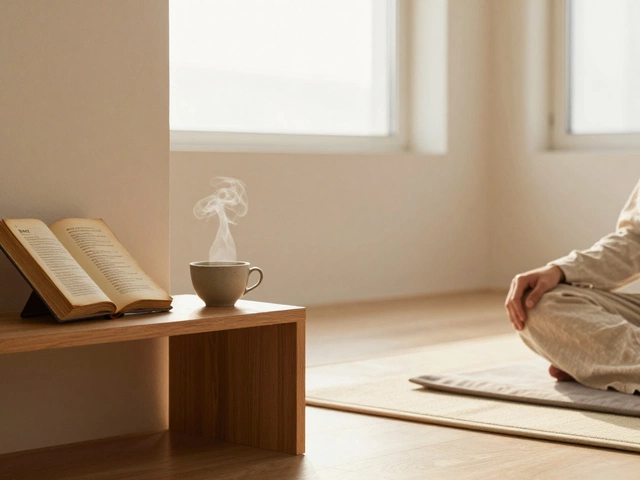If you’re staring at your overflowing closet thinking, “How did I end up with so much stuff?” you’re not alone. A lot of us have an emotional tug-of-war with our things. That old coffee mug with the chipped handle? The mismatched socks from college? There are reasons we hang on to them, but those reasons usually feel heavier than the actual items. Here’s a little secret: there’s a simple hack minimalists use to break the deadlock. It’s called the 20 20 rule. Just a couple of numbers, but they’ve completely changed how people downsize and breathe easier at home. Ready to not be overwhelmed by clutter?
Where Did the 20 20 Rule Come From?
The 20 20 rule didn’t just pop up out of thin air. It’s actually popularized by Joshua Fields Millburn and Ryan Nicodemus—better known as The Minimalists—from their Netflix documentaries and books. Their basic idea? Most things we keep “just in case” can be replaced for less than $20, and in less than 20 minutes from almost anywhere. The rule is rooted in psychological research on decision-making and loss aversion—basically, how the fear of loss drives most clutter dilemmas.
I started putting this to the test during the first round of deep house cleaning after Lucas and I got married. Suddenly, two sets of everything had multiplied into overflowing drawers. Instead of agonizing over each item, we asked: if we needed this tomorrow, could we buy it for under $20 and in 20 minutes? If yes, it hit the donation box. Simple, but it was liberating.
The numbers aren’t magical but statistically, most people live within 20 minutes of a place where they can buy common household objects—think tape, chapstick, Tupperware. US census data shows that over 80% of Americans live in urban or suburban areas, where big-box stores or dollar stores are almost always nearby. That’s not to downplay rural exceptions, but for most, the 20 20 rule covers the routine impulses to stockpile.
| Number | Description | Why It Works |
|---|---|---|
| 20 Dollars | Max amount for easy replacement | Triggers rational, low-risk decisions |
| 20 Minutes | Max time for easy replacement | Reflects realistic access to stores or online shipping |
It’s not about becoming a robot tossing everything out. It’s about asking, “Is hanging onto this really worth the space and mental weight?” If you realize you’re surrounded by $6 measuring spoons and $10 yoga blocks “just in case,” it's usually okay to let them go. That's the power behind the 20 20 rule in minimalism.

How the 20 20 Rule Works in Real Life
Implementing the 20 20 rule is less about ruthlessly tossing out your belongings, and more about getting honest with yourself about what adds value. Sometimes there’s a pang of guilt attached to letting go (“But what if I need it next month?”). This is where facts, not feelings, come into play. According to a study by the UCLA Center on Everyday Lives of Families, Americans own an average of 300,000 items per household. If that sounds wild, it’s because we get attached for dozens of reasons. Nostalgia, fear, inertia—you name it.
So how do you actually do it? Go space by space. Open that kitchen drawer filled with gadgets, the mess in your “junk” spot, the mysterious stash under your bed. Pick up each object and, instead of weighing what you spent on it years ago, use the 20 20 rule as a filter:
- Can I replace this item for less than $20?
- Could I get a replacement in under 20 minutes (either by walking, driving, or ordering with quick delivery)?
But what about sentimental items? Here’s a tip: the 20 20 rule doesn’t apply to everything. Keepsakes, photos, and handwritten notes don’t fit the test. This rule stands strongest with duplicate, rarely-used, or generic items—the odds and ends most likely to become clutter. A Stanford study once found that clutter increases levels of cortisol, a stress hormone—meaning your drawer of random cords truly does affect your calm. If you eliminate a quarter of the things your family never uses, that’s a lot less anxiety just sitting in your home.
Some people worry they’ll be wasteful or end up needing to buy something again. But real-life tries show that very rarely do folks regret what they let go using the 20 20 rule. When you do need to replace something, you aren’t haunted by the “just in case” ghost. You make a conscious purchase, usually when you really need it. In fact, the average American spends $18,000 a year on nonessential items but rarely notices missing simple tools or gadgets briefly parted with. You’re more likely to feel relief than regret.
If you’re looking for a way to ease your way in, start small: try one drawer, one closet, or even just your glovebox. Keep a “maybe” box for a week. If you don’t miss anything, that’s your green light to say bye.

Tips to Get the Most From the 20 20 Rule
Knowing the rule is one thing—actually working it into your daily routine takes a little creativity and maybe even some teamwork at home. Lucas and I make it into a bit of a challenge. Who can fill a grocery bag with 20 20 rule hits fastest? That way, decluttering feels less like a chore and a bit more like a game. If you’re working solo, try using a timer and give yourself 20 minutes to do a zone. The quick decision-making means less time for second-guessing, and more momentum to keep going.
Here are a few tricks to use the 20 20 rule without falling back into clutter-traps:
- Stick reminders near clutter hotspots—a note taped inside your cabinet can jog your memory when you start stuffing things back in.
- Review after big changes—moving, renovations, or changing seasons are perfect times to ask the 20 20 questions as you pack or unpack.
- Do quick math before keeping—if an object saved might “save money” but takes up space for months unused, it’s free real estate to reclaim.
- Set a one-in-one-out policy—whenever you buy something, something else that fits the 20 20 rule goes out.
- Be honest about your actual lifestyle—if you haven’t used the bagel slicer in years, odds are you won’t need it in an emergency.
- Share the rule with family—get kids or partners involved, so everyone understands why things disappear and how to make decisions together.
The big thing is not to be afraid of empty space. Research from Princeton University found that physical clutter competes for your attention, reducing productivity and clarity. When you get rid of “just in case” stuff, your home feels more open—and your brain less foggy. People who go through this process report even sleeping better, because their bedrooms hold less visual noise.
What about sustainability? That’s a fair concern. The 20 20 rule is best paired with mindful donating, recycling, and upcycling. Avoid adding to landfill waste if you can. If you have duplicates in good condition, charities always need basics—cookware, winter gear, kids’ backpacks. Letting these go might help people in the community, not just your own mental health.
Finally, don't expect your home to become a magazine spread overnight. The 20 20 rule works best as a habit, not a one-and-done purge. Tackle a new room each month, or set reminders on your phone to check in quarterly. Less stuff creeping in means less effort long-term. Plus, as you get familiar with the process, letting go gets easier—sometimes even addicting.
If you’ve ever wished for more time in your day or less stress in your head, try the 20 20 rule. A lighter, calmer home doesn’t just happen—it’s built, one easy decision at a time. Minimalism isn’t about having nothing; it’s about holding onto what really counts—and giving the rest just 20 bucks and 20 minutes of your peace back.







